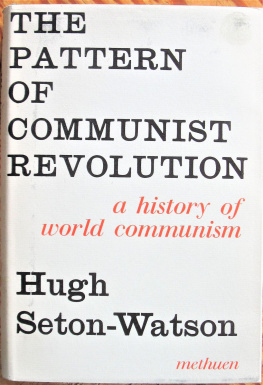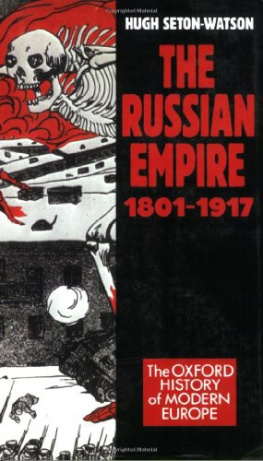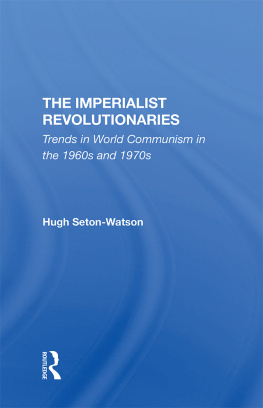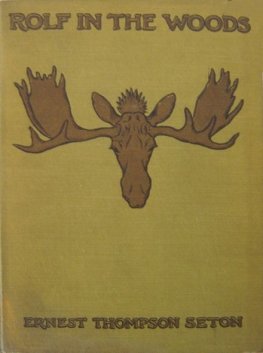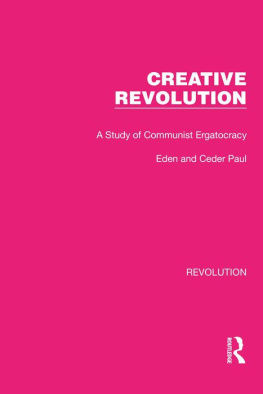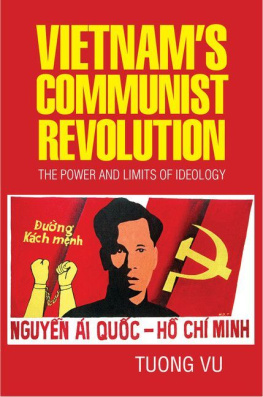First published in 1953 by Methuen & Co Ltd
Revised and enlarged edition 1960
This edition first published in 2022
by Routledge
4 Park Square, Milton Park, Abingdon, Oxon OX14 4RN
and by Routledge
605 Third Avenue, New York, NY 10158
Routledge is an imprint of the Taylor & Francis Group, an informa business
1960 Hugh Seton-Watson
All rights reserved. No part of this book may be reprinted or reproduced or utilised in any form or by any electronic, mechanical, or other means, now known or hereafter invented, including photocopying and recording, or in any information storage or retrieval system, without permission in writing from the publishers.
Trademark notice: Product or corporate names may be trademarks or registered trademarks, and are used only for identification and explanation without intent to infringe.
British Library Cataloguing in Publication Data
A catalogue record for this book is available from the British Library
ISBN: 978-1-032-12623-4 (Set)
ISBN: 978-1-003-26095-0 (Set) (ebk)
ISBN: 978-1-032-13025-5 (Volume 19) (hbk)
ISBN: 978-1-032-13030-9 (Volume 19) (pbk)
ISBN: 978-1-003-22732-8 (Volume 19) (ebk)
DOI: 10.4324/9781003227328
Publishers Note
The publisher has gone to great lengths to ensure the quality of this reprint but points out that some imperfections in the original copies may be apparent.
Disclaimer
The publisher has made every effort to trace copyright holders and would welcome correspondence from those they have been unable to trace.
Introduction
B OTH the subject and the literature of communism are vast. Communism is a theory, which professes to explain philosophy, religion, history, economics and society. Communism is a vocation, whose devotees accept its discipline in every part of their private and professional lives. Communism is a science of conspiracy, a technique of wrecking and subversion. Communism is a revolutionary movement, a political force which operates in a social environment, which recruits its members from various classes of society, and marshals its armies against various political opponents.
Each of these aspects of communism has its literature. In the field of theory there are the works of the mastersMarx, Engels, Kautsky, Plehanov, Luxemburg, Lenin, Trotski, Stalinand many works of commentary. On the vocation we have the testimony of ex-communists, including imaginative writers of the stature of Silone, Serge, Plisnier and Koestler. On the conspiracy there are both official documents and a rich assortment of memoirs by ex-communists and others, of varying degrees of reliability. On the revolutionary movement there is a wealth of raw material in the reports of congresses of the Comintern and of the individual parties, and in the miscellaneous periodicals published by them. On the Russian Revolution and the Soviet regime there are a few analytical works of great merit, and some outstanding studies of the French and Chinese parties have recently appeared.1 The most important survey of the communist movement as a wholewith special emphasis on the Cominternis Franz Borkenaus The Communist International, which appeared in 1938 and dealt mainly with the events of 19181919 and of the 1920s. The same authors recent work,2 which appeared when the present work was in the press, has carried the story forward, for Europe only, to 1950, with fuller chronological detail but less acute analysis than his first book. But in the field of comparative analysis of communist movements, on the world scale, much more remains to be done.
1 A. Rossi, La physiologie du parti communiste, Paris, 1948; B. Schwarz, Chinese Communism and the rise of Mao, Harvard, 1951.
2 European Communism, 1953.
It is to this last aspect that the present work is intended to be a contribution. It thus deals with only a partthough an important and rather neglected partof the phenomenon of communism. Readers who seek to understand the whole phenomenon can hope to find only partial enlightenment in these pageseven if this book achieves its limited objective. They will certainly need also to acquaint themselves with Marxist-Leninist theory, preferably from the original sources, as well as from one of the better commentaries.1 Their understanding would also be increased by the study of some of the works of imaginative literature which have a bearing on the mentality of communist man and woman.2
The philosophical and psychological sides of communism are barely mentioned in the present work, not because they do not interest me, or because I have not studied them, still less because I do not consider them important, but because there is a limit to what one work can contain, and because in my opinion they have been treated in other works far more authoritatively, and with far more literary distinction, than I could aspire to.
The present work is intended to be both less and more than a survey of communism in the world to-day or a history of communist movements. The method is neither chronological history nor contemporary political geography, but comparative historical analysis. Whenever possible, comparisons are made between different social and political situations, and different successful or unsuccessful attempts by communists to seize power.
The distinction between communist movements before and after seizure of power cannot be pushed too far. The development of the state machine and the social structure of the Soviet Union had so important an effect on the actions of communist movements outside the Soviet Union that I have found it impossible to omit from these pages a summary of the main features of Soviet social and political evolution. In fact about one-quarter of the book is devoted to Soviet internal affairs. The Russian Revolution, the internal struggle in the Bolshevik party, the Five Year Plans and the Yezhovshchina all profoundly affected world communism. The Stalinist regime has become the ideal for all communists, and the phrase world revolution today means the extension of the Stalinist regime to all countries of the world. It is thus obvious that the world communist movement is unintelligible without some knowledge of the Stalinist system. The Stalinisation of Eastern Europe has made necessary a comparison between the popular democratic regimes and that of the Soviet Union. This is still more necessary in the case of communist China, whose claim to be considered as a distinct form of government is supported not only by the great differences that separate China from both Russia and Europe, but also by the specific statements of the Chinese communist leaders themselves. These are problems which cannot be ignored in the present work. Therefore, though it is principally concerned with communist bids for power, about one-quarter of it is devoted to communists in power, in Russia, Eastern Europe and China.
1 For example, R. N. Carew Hunt, The theory and practice of communism, 1949; F. Wetter, Il materialismo dialettico sovietico, Rome, 1950.
2 C. Plisnier, Faux passeports, Paris, 1938; A. Koestler, Darkness at noon, 1940; V. Serge, Laffaire Toutaev, Paris, 1950.
An important aspect of the Stalinist regime, which does not usually receive attention in books on communism, is its treatment of national and colonial problems. The countries in which the communists have achieved their greatest successes are countries of mixed or uncertain nationality or colonial subjection. Russia, China, the Balkans and South-East Asia are the obvious examples. Lenin carefully studied and systematically exploited national and colonial tensions. In this field Stalin was his diligent and ingenious, if not always successful, pupil. Communist propaganda directed to Asian peoples has made much of the Soviet claim to have solved national and colonial problems. The true position of non-Russian nationalities in the Soviet Union however bears little relation to the propagandists picture. This contrast between reality and propaganda in the national and colonial problems is an important part of the history of the communist movement. I have therefore devoted to it more space than the reader will have expected.

